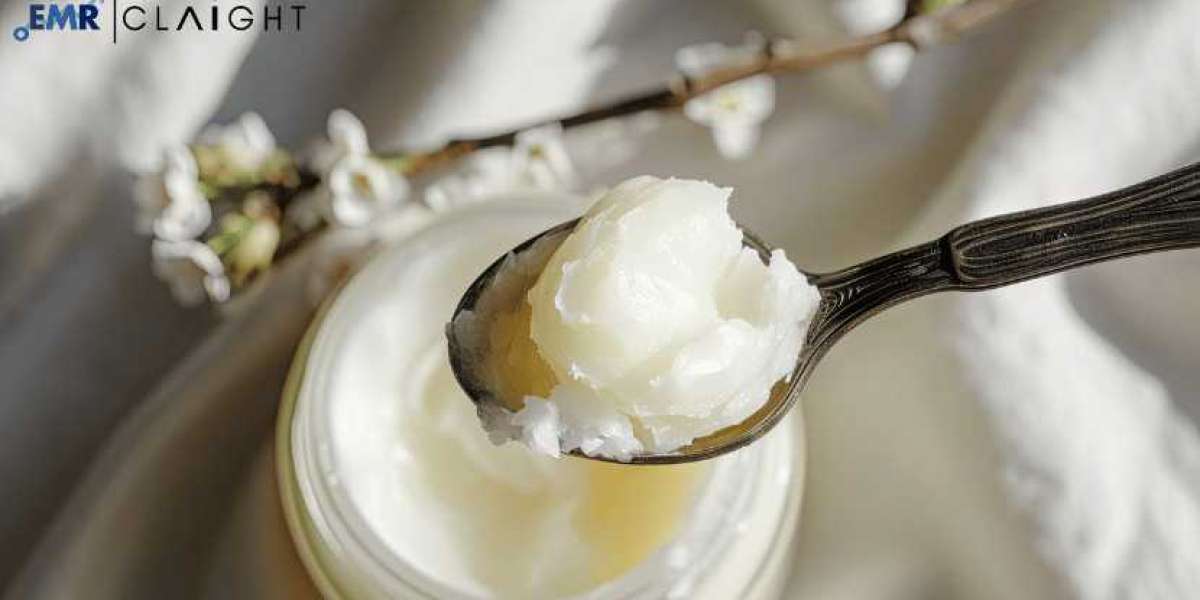Petroleum Jelly Market Outlook
The global petroleum jelly market is anticipated to experience substantial growth, with a projected Compound Annual Growth Rate (CAGR) of 5.0% from 2024 to 2032. This growth is driven by various factors, including the increasing demand for personal care products and the expanding applications of petroleum jelly across multiple industries. The versatility of petroleum jelly, coupled with its affordability and effectiveness as a base for a variety of formulations, is expected to propel its market expansion. As consumer preferences shift towards products with multifunctional benefits and minimal chemical additives, the appeal of petroleum jelly in sectors such as personal care, healthcare, and industrial applications is set to increase, supporting market growth in the coming years.
Petroleum Jelly Market Share
The petroleum jelly market has seen a significant rise in both size and share, largely due to evolving consumer preferences and industry trends. Its growing popularity as a base ingredient in personal care and healthcare products aligns with the broader demand for cost-effective and multifunctional solutions. With its widespread use in cosmetics, skincare, and medicinal applications, petroleum jelly's market trajectory continues to ascend.
Get a Free Sample Report with Table of Contents@ https://www.expertmarketresearch.com/reports/petroleum-jelly-market/requestsample
In the competitive landscape of the petroleum jelly market, key players are actively innovating to capture emerging opportunities and address shifting consumer needs. Strategies such as product diversification, geographic expansion, and strategic partnerships are being leveraged by major companies to maintain market dominance and achieve a competitive advantage. Investments in research and development to improve product quality and explore new applications further contribute to the market's expansion.
As global consumers become more focused on health and wellness, the petroleum jelly market is poised for sustained growth. Factors such as increased awareness of skin health and the demand for multifunctional products are expected to drive the need for petroleum jelly across various sectors. Additionally, favorable regulatory frameworks and the growing trend towards sustainability are likely to support market growth, reinforcing petroleum jelly's position as a key player in the global personal care and industrial markets.
Petroleum Jelly Market Segmentation
Petroleum jelly, derived from refined petroleum, is widely utilized in personal care and industrial applications for its protective and emollient properties. It is predominantly used as a base for ointments, lotions, and other topical products due to its ability to form a barrier that locks in moisture.
The market segmentation for petroleum jelly includes various categories based on application, type, and distribution channel:
By Application:
- Personal Care: Includes skincare, haircare, and cosmetic products. Petroleum jelly is commonly used in lotions, creams, lip balms, and other beauty products for its moisturizing and protective qualities.
- Healthcare: Encompasses medical and pharmaceutical applications such as wound care, burn treatment, and other medicinal uses. Its non-reactive nature makes it suitable for sensitive applications.
- Industrial: Utilized as a lubricant, rust preventative, and in other industrial processes where its protective properties are advantageous.
By Type:
- Refined Petroleum Jelly: Highly purified, often used in personal care and medical products.
- Unrefined Petroleum Jelly: Generally used in industrial applications where high purity is less critical.
By Distribution Channel:
- Supermarkets/Hypermarkets: Major retail outlets where petroleum jelly products are widely available.
- Convenience Stores: Smaller retail spaces offering easy access to petroleum jelly.
- Online Platforms: E-commerce sites providing a convenient shopping experience and broader product selection.
- Pharmacies/Drugstores: Specialized outlets focusing on healthcare and personal care products.
Geographically, the market spans North America, Europe, the Asia Pacific, Latin America, and the Middle East and Africa, addressing regional demands for petroleum jelly in both personal care and industrial applications.
Petroleum Jelly Market Growth Analysis
The petroleum jelly market is currently in a phase of robust growth, driven by several key factors and market dynamics. Consumer preferences are increasingly shifting towards multifunctional and cost-effective solutions, which has led to a rise in demand for petroleum jelly across various sectors. Its protective and moisturizing properties make it an attractive option for both personal care and healthcare products.
Additionally, the market's expansion is supported by the increasing utilization of petroleum jelly in industrial applications. Its use as a lubricant, rust preventative, and in other processes highlights its versatility and broad applicability. The growing availability of petroleum jelly products through diverse distribution channels, including online platforms, has further facilitated market access and contributed to heightened consumer awareness.
Overall, the petroleum jelly market is set for continued growth, driven by evolving consumer preferences, expanding applications, and increased awareness of its benefits.
Trends and Opportunities
The petroleum jelly market is witnessing several key trends and opportunities that are shaping its future and offering potential for growth and innovation:
Rising Demand for Multifunctional Products: As consumers seek products with multiple benefits, petroleum jelly’s role as a versatile base ingredient in personal care and healthcare products is becoming increasingly valuable.
Growing Awareness of Skin Health: The increasing focus on skin health and wellness is driving demand for effective moisturizers and protective agents like petroleum jelly.
Expanding Industrial Applications: Beyond personal care, petroleum jelly is finding new uses in various industrial processes, including lubrication and rust prevention. This diversification of applications is opening up new opportunities for market growth.
Technological Advancements: Innovations in refining processes and formulations are enhancing the quality and functionality of petroleum jelly products, making them more appealing to both consumers and industry professionals.
E-Commerce Growth: The rise of online retail channels is providing consumers with easy access to petroleum jelly products, expanding market reach and driving sales.
Competitive Landscape
The competitive landscape of the petroleum jelly market includes a range of key players, each focusing on different strategies to maintain their market position and achieve growth. Notable companies in the global petroleum jelly market include:
- Vaseline (Unilever): A leading brand known for its extensive range of petroleum jelly products.
- Cargill Inc.: A major player involved in the production and distribution of petroleum jelly and other personal care ingredients.
- BASF SE: A global chemical company offering refined petroleum jelly for various applications.
- Chemsol, Inc.: Specializes in providing high-quality petroleum jelly for both personal care and industrial uses.
- Kraton Polymers: Known for its innovative approaches to petroleum-based products, including petroleum jelly.
Read More Reports:
https://www.expertmarketresearch.com/reports/veterinary-software-market
https://www.expertmarketresearch.com/reports/kosher-foods-market/market-share
https://www.expertmarketresearch.com/articles/top-4-companies-in-the-global-corrugated-boxes-market
Media Contact:
Company Name: Claight Corporation
Contact Person: Eren smith, Corporate Sales Specialist – U.S.A.
Email: [email protected]
Toll Free Number: +1-415-325-5166 | +44-702-402-5790
Address: 30 North Gould Street, Sheridan, WY 82801, USA
Website: https://www.expertmarketresearch.com
Aus. Site: https://www.expertmarketresearch.com.au



